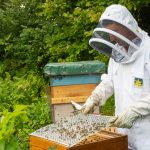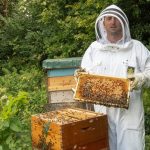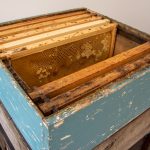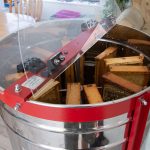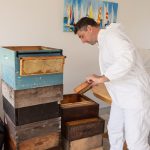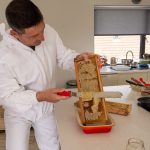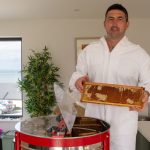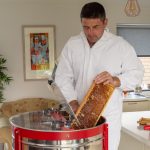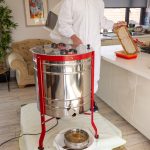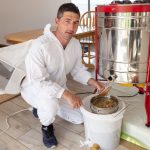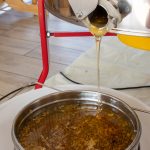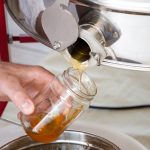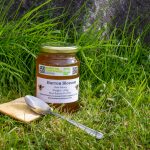Burren Blossom Honey is a small-scale artisan producer, based in the village of Ballyvaughan and owned by local farmer Damian Martyn. Damian first became interested in bee keeping, five years ago, starting small with a couple of hives. His interest grew when he attended a course in beekeeping in Galway and decided to expand further, with another four hives. Damian sells his honey at the local farm shop at Aillwee Burren Experience and to the local community.
Story
The landscape of the Burren is ripe for honey producing, with its rich biodiversity of local plants and flowers Damian’s bee hives are hidden away in a field up a small ‘boreen’ or country road which is next to the striking limestone hills of the Burren. During the year, the hives must be checked weekly to ensure they are healthy. The honey is usually harvested in late August and early September. Depending on the season and what is in bloom, the honey has flavours of dandelion, clover, heather and much more. Although the honey is greatly influenced by seasonality, a hive will yield on average 20kg per year.
The Land
The Burren is internationally famed for the diversity of its flowering plants, and honey produced by bees foraging in the Burren contains nectar and pollen from alpine plants sharing space with others seen normally in Mediterranean climates. Woodland plants grow out in the open, away from any forest, and many species of flowering plants common here are extremely rare elsewhere in the world.
The result of this diverse flora is a jar of honey containing a blend of nectar varieties not found together anyplace else. Honeybees are native to Ireland and are known to have lived there for at least 10,000 years. Most of the native dark Irish bee population was wiped out around 1915 by Isle of Wight disease, a paralysis caused by mite infestation. Beekeepers brought in other dark bees with similar characteristics from Northern Europe to replace the native population. Irish bees are chubbier and have longer abdominal hairs than their more common cousins, two characteristics that help them stay warm during long periods of cool weather. They live longer than the six weeks allotted most of honeybees, and are able to go out and forage in the drizzly weather that can last for weeks in the west of Ireland.
The soils of the Burren that support all the plants and bees only started to develop after the end of the last Ice Age, 17,000 years ago. However, due to the extended period of cold that persisted after the end of the ice age, it would have taken many thousands of years for true soils to develop. The soils are well-drained and naturally organic-rich due to the input of decaying plants and animal waste.
The bees are housed near a Turlough (disappearing lake), a limestone area that floods sporadically due to groundwater rising after heavy rainfall, then drains through the fractures in the limestone. Turloughs often have a collection of flowers which differs from the surrounding limestone, adding greater variety for the bees in the area and different flavour combinations in the honey they produce.
